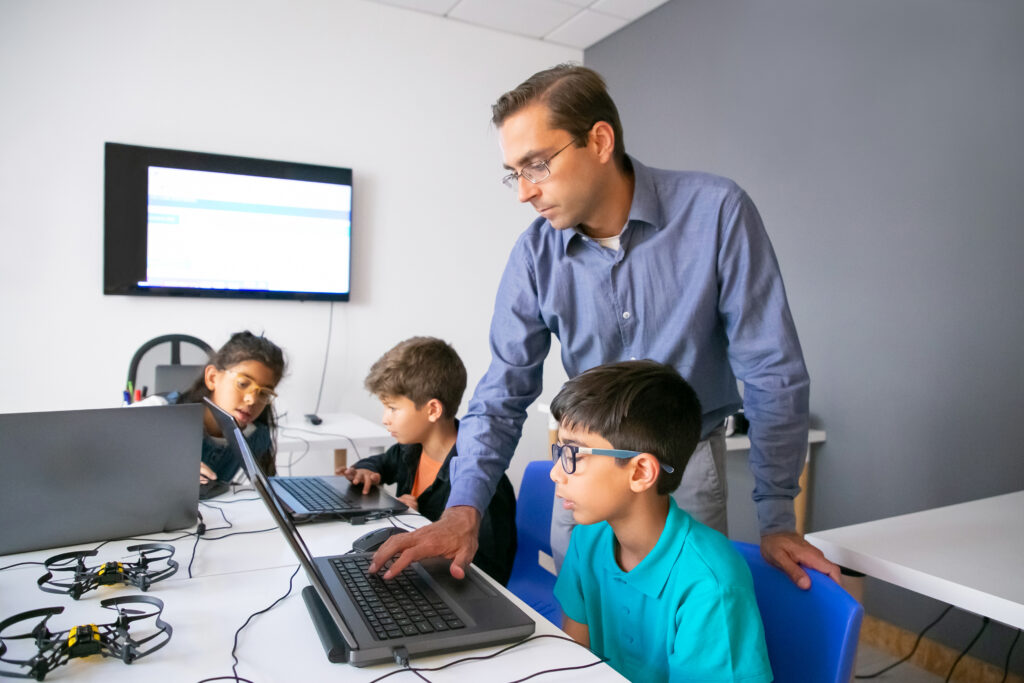
role of technology in education 2025
In recent years, the education landscape has been rapidly evolving, and the role of technology in education 2025 is proving to be more transformative than ever before. From smart classrooms to AI-driven personalized learning, technology is not just supporting education—it is redefining it.
As we step into 2025, the integration of digital tools, platforms, and intelligent systems is reshaping how students learn, how teachers teach, and how institutions operate. This article explores how technology is creating more accessible, personalized, and effective learning experiences, along with the challenges and opportunities it presents.
The Digital Revolution in Classrooms

One of the most visible impacts of technology in education is the transformation of traditional classrooms. Smartboards, tablets, virtual reality (VR), and augmented reality (AR) tools have replaced chalkboards and projectors in many schools. These technologies enable interactive and immersive learning, especially in subjects like science, geography, and history.
In education 2025, students can take virtual field trips to historical monuments, conduct virtual science experiments, and even interact with 3D models of the human body. This experiential approach not only enhances understanding but also increases engagement and curiosity.
The role of technology in education 2025 goes beyond hardware. Learning Management Systems (LMS) like Google Classroom, Moodle, and Microsoft Teams allow educators to assign work, assess progress, and provide feedback in real time. These platforms have become the backbone of modern education.
Artificial Intelligence and Personalized Learning

A standout feature of the role of technology in education 2025 is the rise of Artificial Intelligence (AI). AI-powered platforms can assess a student’s learning style, strengths, and weaknesses, and then adapt content accordingly. This personalization helps students learn at their own pace and enhances their academic performance.
For example, platforms like Khan Academy and Duolingo use algorithms to create custom learning paths, ensuring that no student is left behind. AI also supports teachers by automating administrative tasks, grading, and even identifying at-risk students early on.
Moreover, AI chatbots are increasingly being used for student counseling, answering academic queries, and providing 24/7 support. This constant access to help reduces dependency on fixed office hours and supports autonomous learning.
A Heading Using the Keyword: The Role of Technology in Education 2025 and its Impact on Teachers
While much of the conversation around edtech focuses on students, the role of technology in education 2025 is equally significant for teachers. Modern tools are helping educators deliver lessons more effectively, assess learning more accurately, and stay connected with students and parents beyond classroom walls.
Teachers can now use analytics to understand which teaching methods are working and which need adjustment. Online professional development courses also enable them to stay updated with the latest pedagogical trends and tools, helping them evolve with the system.
Remote and Hybrid Learning: The New Normal
The COVID-19 pandemic accelerated the adoption of remote learning, and by 2025, hybrid education models have become mainstream. Students now have the flexibility to attend classes in person, online, or through a combination of both. This model offers greater inclusivity, especially for students in remote areas or those with special needs.
Cloud computing, 5G internet, and mobile learning apps are crucial enablers in this shift. With tools like Zoom, Google Meet, and Edmodo, students can access high-quality education from anywhere. This global classroom model is a direct outcome of the role of technology in education 2025.
Gamification and Engagement Tools
The role of technology in education 2025 has made learning more engaging and student-centered. Gamification has emerged as a powerful strategy to maintain student interest. Educational games, quizzes, leaderboards, and rewards make learning fun and interactive. Platforms like Kahoot!, Quizizz, and Classcraft are widely used to reinforce concepts while keeping students motivated and active in the learning process. The role of technology in education 2025 clearly highlights how digital tools and gamified experiences are transforming traditional classrooms into interactive learning spaces.
This approach not only improves retention but also fosters healthy competition and teamwork. In 2025, gamification is not just an add-on; it is a core teaching strategy made possible by advanced technology.
Challenges and Considerations

Despite the advancements, there are challenges that need addressing:
- Digital Divide: Not all students have equal access to devices and high-speed internet.
- Data Privacy: With more data being collected, ensuring cybersecurity and student privacy is paramount.
- Teacher Training: Effective use of technology requires adequate training and support for educators.
Governments and institutions must work collaboratively to create inclusive, secure, and scalable tech-based education models.
The Future Outlook
As we look ahead, the role of technology in education 2025 will continue to evolve. Emerging trends like blockchain for academic credentials, augmented reality textbooks, and AI tutors will further enhance the education system. The goal is to create a more equitable, engaging, and effective learning environment for every student.
The success of technology in education ultimately lies in its thoughtful integration—not as a replacement for teachers, but as a powerful tool that enhances human connection, creativity, and critical thinking.
Conclusion
To sum up, the role of technology in education 2025 is a game-changer. It’s not just about gadgets and apps—it’s about building an education system that is flexible, inclusive, and future-ready. With continued innovation and responsible implementation, technology holds the key to unlocking the full potential of learners and educators alike.
As we continue to embrace digital transformation, it is clear that education in 2025 is no longer bound by four walls—it is a dynamic, digital, and deeply human experience.






